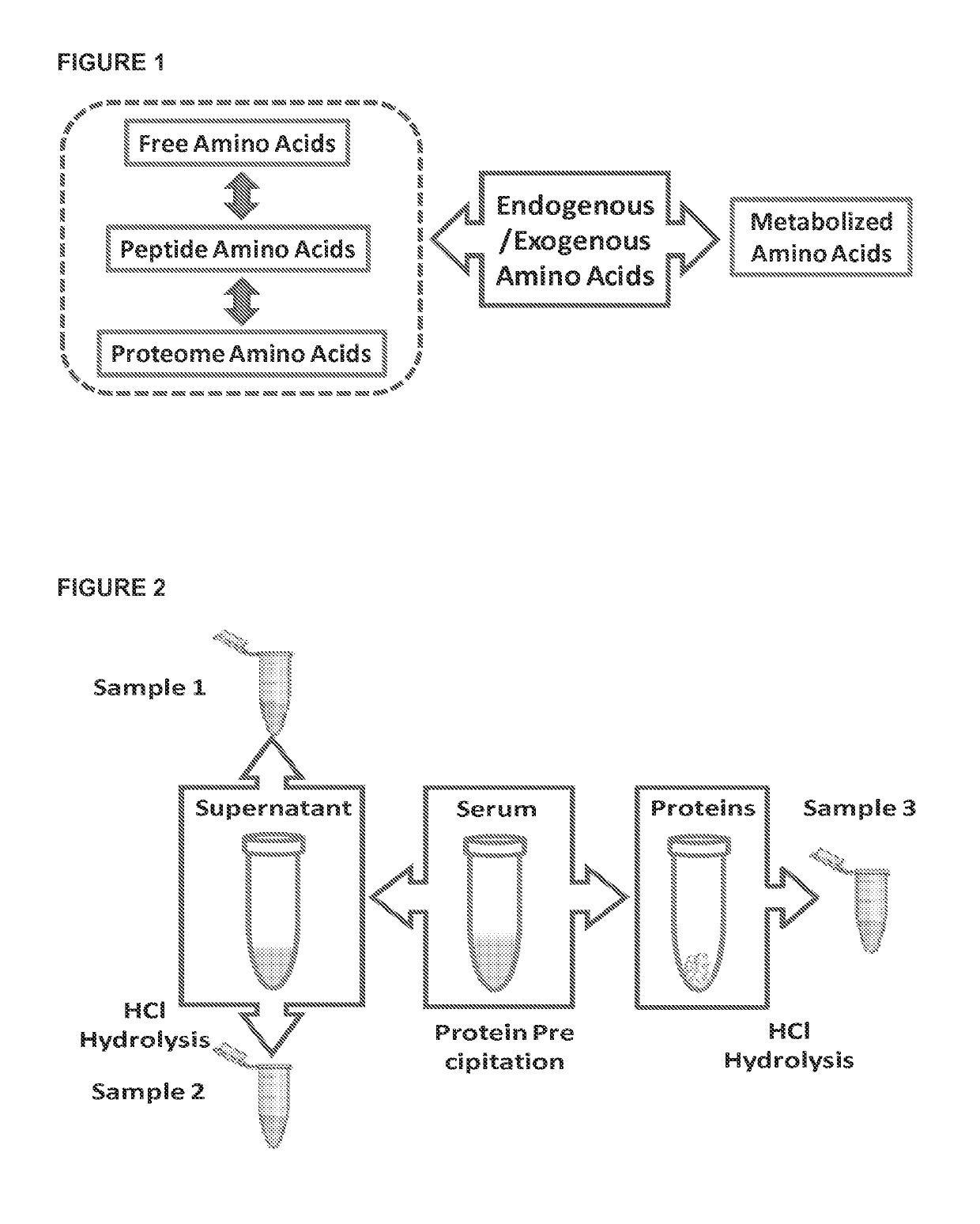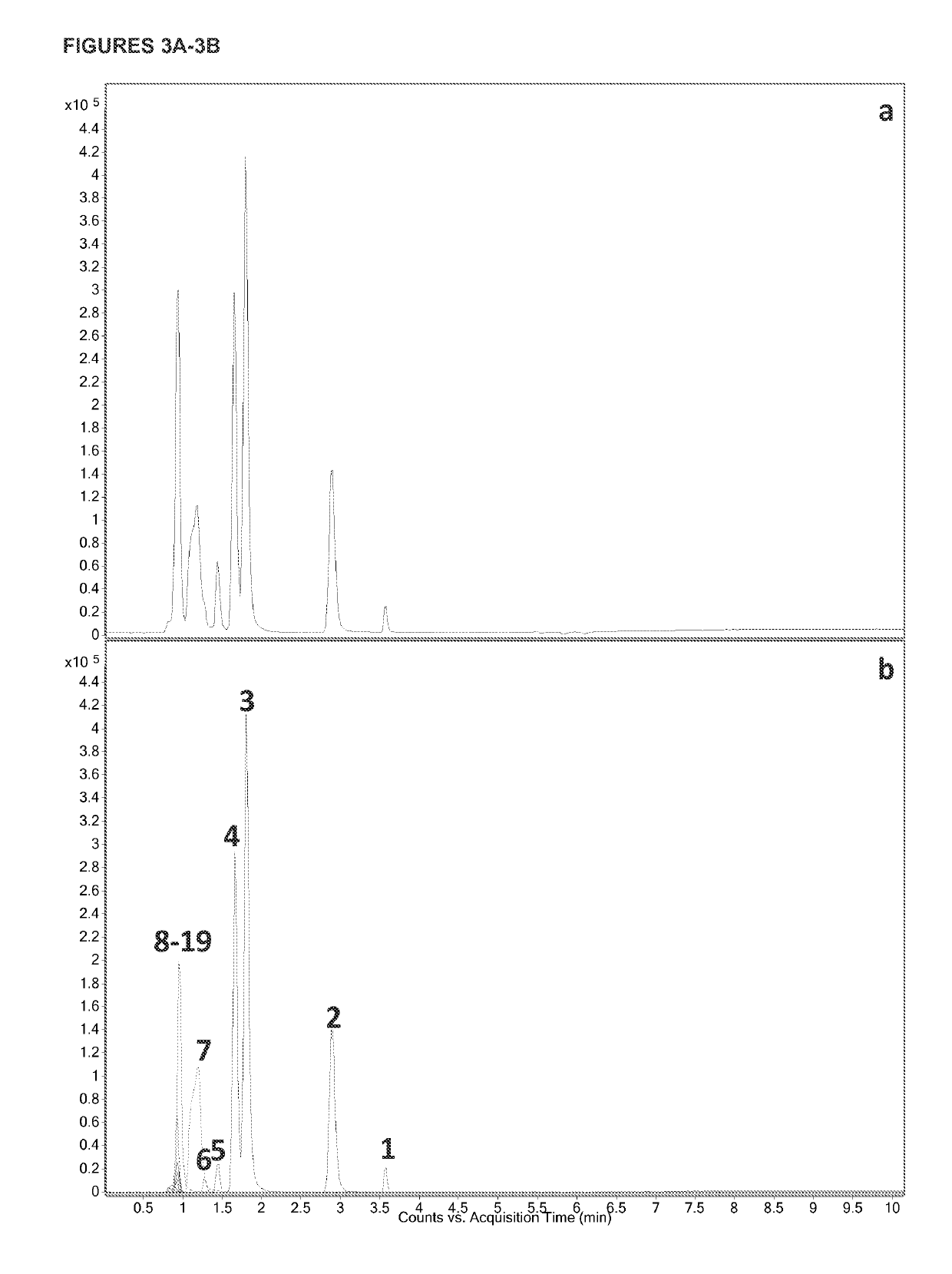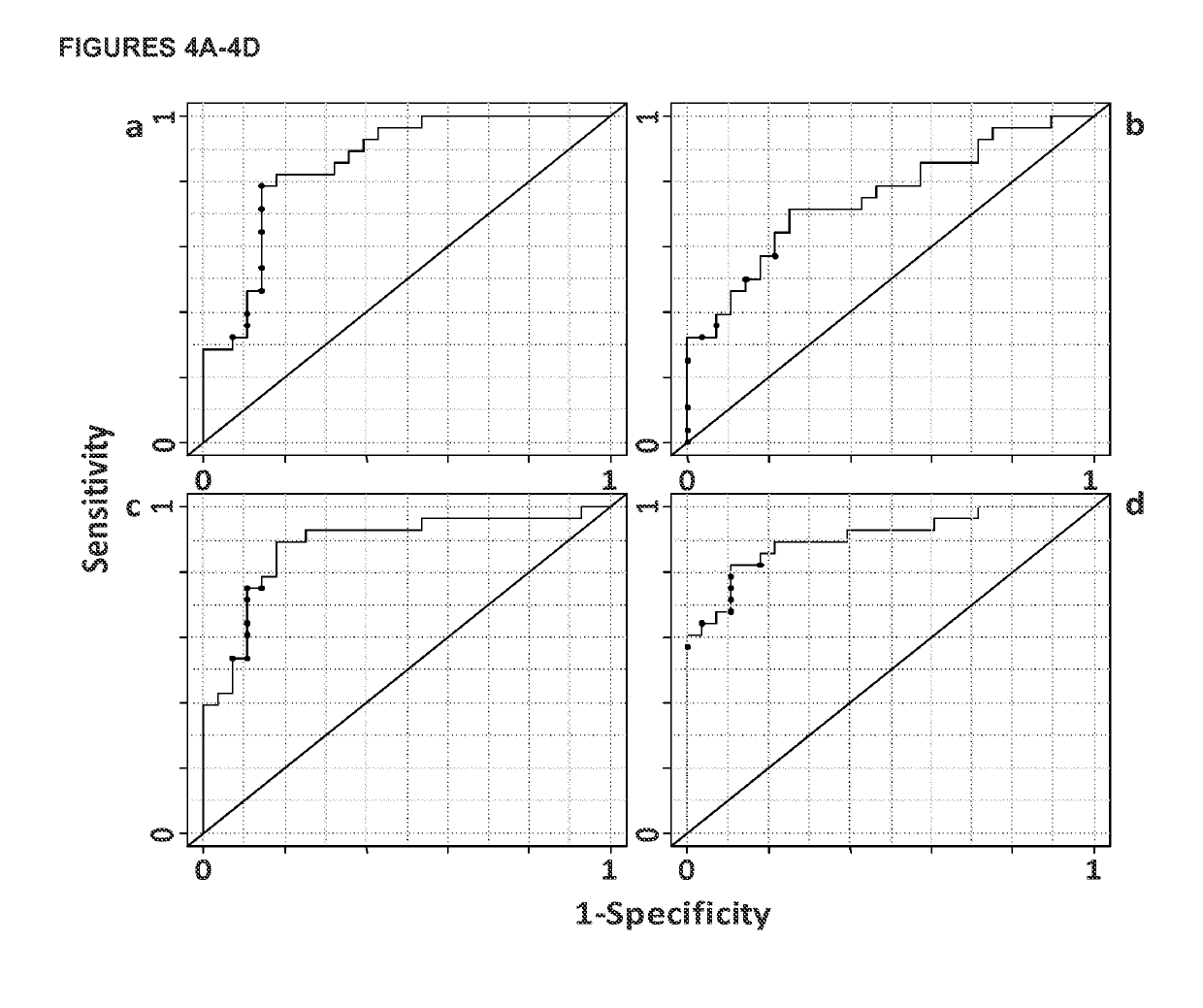Biomarkers for detecting and monitoring colon cancer
a biomarker and colon cancer technology, applied in the field of molecules and methods for detection and monitoring of colon cancer, can solve the problems of unnecessarily high death rate, unreliable biomarker solely for crc cancer diagnosis, and steady declin
- Summary
- Abstract
- Description
- Claims
- Application Information
AI Technical Summary
Benefits of technology
Problems solved by technology
Method used
Image
Examples
example 1
sive Analysis of Amino Acids in Different Domains for Detecting Colon Cancer
[0065]Amino acids play very important roles in biological systems, and they directly connect metabolism with the proteome. While many studies have profiled free amino acids (FAAs) or proteins, the changes of individual amino acids in the proteome due to cancer remain unknown, and their combination with those of the FAAs has not been utilized in multivariate statistical modeling. In this example, we obtained individual amino acids from peptides and proteins using traditional acid hydrolysis. FAAs, the combination of free amino acids and soluble peptide amino acids (FAASPAAs), and proteome amino acids (PAAs) were measured from the serum samples of colon cancer patients and healthy controls using liquid chromatography tandem mass spectrometry (LC-MS / MS). It was discovered that colon cancer changed the amino acid profiles and their relative distribution in the three domains. Furthermore, a multivariate statistic...
example 2
l Cancer Detection Using Targeted Serum Metabolic Profiling
[0148]In this example, a targeted liquid chromatography-tandem mass spectrometry-based metabolic profiling approach was employed for identifying biomarker candidates that could enable highly sensitive and specific CRC detection using human serum samples. 158 metabolites from 25 metabolic pathways of potential significance were monitored. 234 serum samples from three groups of patients (66 CRC patients, 76 polyp patients, and 92 healthy controls) were analyzed. Partial least squares-discriminant analysis (PLS-DA) models were established, which proved to be powerful for distinguishing CRC patients from both healthy controls and polyp patients in this study. Receiver operator characteristic curves generated based on these PLS-DA models showed high sensitivities (0.96 and 0.89, respectively, for differentiating CRC patients from healthy controls or polyp patients), good specificities (0.80 and 0.88), low false discovery rates (0...
example 3
Serum Metabolite Profiling for Colorectal Cancer Progression Monitoring
[0217]In this example, a targeted LC-MS / MS metabolic profiling approach was applied using serial serum samples to monitor CRC patient disease progression. A PLS-DA model using a panel of 5 metabolites (succinate, N2, N2-dimethylguanosine, adenine, citraconic acid, and 1-methylguanosine) with or without CEA was established, and excellent model performance (sensitivity=0.83, specificity=0.94, AUROC=0.91) was obtained, superior to CEA alone (sensitivity=0.75, specificity=0.76 AUROC=0.80). Monte Carlo cross validation was applied, and the robustness of the model was clearly observed by the separation of true classification models from the random permutation models. This is the first study using an LC-MS / MS targeted serum metabolic profiling approach for CRC disease progression monitoring. The results support the usefulness of metabolic profiling for CRC patient therapy monitoring.
[0218]The most widely used CRC monito...
PUM
| Property | Measurement | Unit |
|---|---|---|
| temperature | aaaaa | aaaaa |
| flow rate | aaaaa | aaaaa |
| particle size | aaaaa | aaaaa |
Abstract
Description
Claims
Application Information
 Login to View More
Login to View More - R&D
- Intellectual Property
- Life Sciences
- Materials
- Tech Scout
- Unparalleled Data Quality
- Higher Quality Content
- 60% Fewer Hallucinations
Browse by: Latest US Patents, China's latest patents, Technical Efficacy Thesaurus, Application Domain, Technology Topic, Popular Technical Reports.
© 2025 PatSnap. All rights reserved.Legal|Privacy policy|Modern Slavery Act Transparency Statement|Sitemap|About US| Contact US: help@patsnap.com



